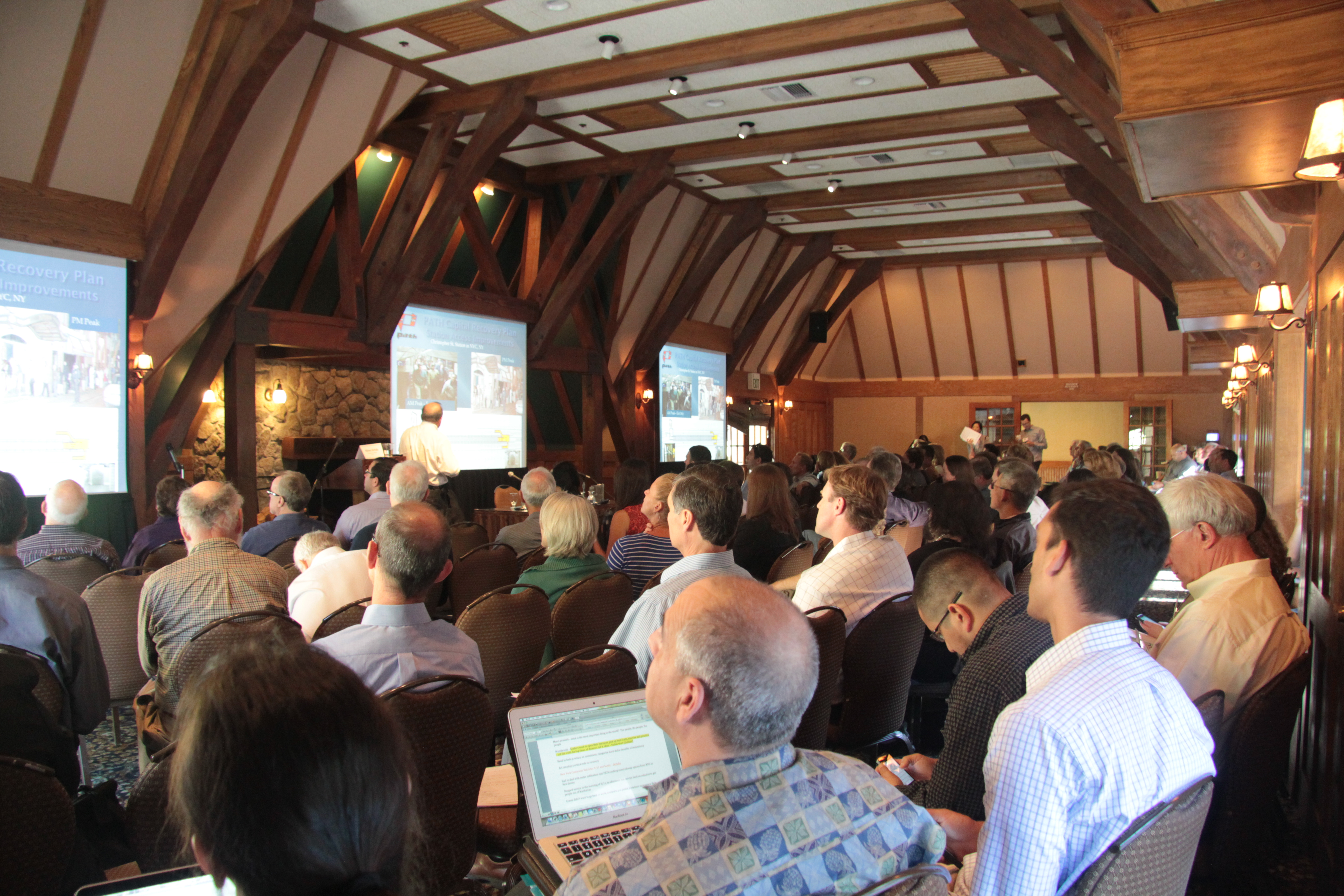Most people are familiar with hard infrastructure- perhaps images of roads, bridges, buildings, and sewers immediately come to mind. Yet many may not be as familiar with the concept of soft infrastructure, which refers to human capital and the social and cultural resources that cultivate healthy communities. Nurit Katz, Chief Sustainability Officer at UCLA, moderated a panel of presentations that looked at this idea of soft infrastructure and its relationship to resilient cities.
First up was Sunaree Marshall from the U.S. Department of Housing and Urban Development (HUD). Marshall’s talk offered an insightful view of the way HUD is pursuing new and innovative ways to create resilience. While the federal government has often been a follower in this area, they have launched a billion dollar design challenge to expand the ways in which we develop adaptive capacity.
Marshall focused on a particular 2010 case study in which a middle-class African-American neighborhood in New Orleans was was awarded a HUD grant largely through its approach to local engagement. The neighborhood along the I-10 freeway known as the Claiborne Corridor had a large number of residents living at below the poverty level, high unemployment, and the overall community was faced with limited access to quality jobs, transportation, and safe places to live. Rather than take a top-down approach, the city of New Orleans worked with the neighborhood to identify the local economic changes that come about from physical changes and looked at ways to build both skills and networks in the community. People are assets, Marshall pointed out, and asset-based development means focusing on the the needs and fears of local communities.
Brent Woodworth is executive director of the Los Angeles Emergency Preparedness Foundation, and in a talk full of engaging examples from around the world he highlighted the importance of innovation and leadership in the development of resilience. Resilience takes new programs that have not been tried before; the same old programs won’t work. For instance, Pakistan’s response to the catastrophic earthquake in 2013 was a major breakthrough— for the first time, a country had the courage to ask the international community for designated items and reject other offerings. As a result, the country received important goods such as helicopters and tents in a much more efficient manner and was able to more effectively reroute military vehicles to serve the wounded.
Woodworth also discussed the idea of a three-phase continuum in which the first step is to identify key sectors involve them in a collaborative resilience effort. Phase two is based on building tools for communication, since during a crisis the role of communication is just as important as food, water, and shelter. The third phase centers of building the leadership platform to continue this effort of collaborative planning for an uncertain future.
Joanne Stevenson is a Research Associate with Resilient Organizations in New Zealand. She presented a case study from Cristchurch, New Zealand, in which a series of earthquakes and aftershocks in 2010 and 2011 caused enormous damage to the city. Stevenson’s research of the aftermath affirmed the importance of social capital and relationships, especially in relation to the economic effects of a disaster. When people care about the networks they are in they do more to bring resources into the workplace. Stevenson found an important links between organizations as well. Across the board, the biggest challenge for small businesses was dealing with staff well-being.
Stevenson urged the audience to think of resilience not as an insurance policy but rather as an immune system— in order to keep you strong it needs to be running all the time. Unfortunately, this emphasis on ongoing practice is not seen often enough in resilience programs, but when a crisis hits, it is the 3AM friends that both individuals and organizations need the most. Neither the size, church affiliation, nor prior plans mattered as much as the relationships that had been established over many years.
Summary by Mark Friedlander and Nate Holmes
